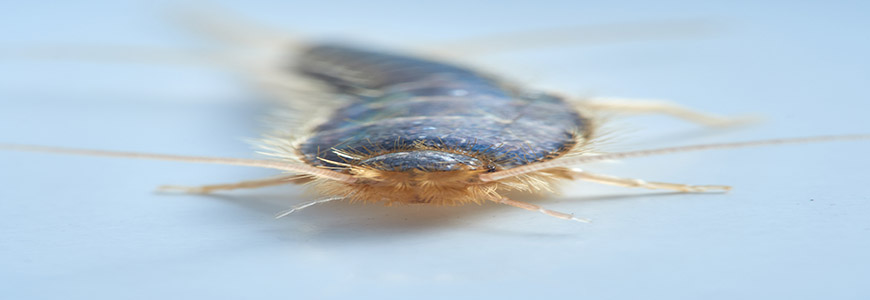Are Silverfish Bad for Your Home?
Silverfish are nocturnal insects, harmful to your home, that can cause damage if left unchecked. Learn about the potential risks they pose, their diet, whether they bite humans, and how to prevent and control their infestations in damp areas and crawl spaces. Discover why silverfish are harmful to both humans and pets.
Silverfish, harmful insects to your home, are small, wingless, nocturnal creatures primarily silver or gray in color. Their distinctive shape includes a tapered body that broadens near the head, and they have long antennae. They thrive in humid environments with temperatures ranging from 70 to 80 degrees Fahrenheit.
Silverfish have a unique lifecycle that allows them to multiply rapidly. Female silverfish can lay up to 100 eggs at a time, which hatch into nymphs within a few weeks. These nymphs molt several times over a few months before reaching maturity, typically within 12 to 18 months[1].
To prevent further damage, identifying signs of a silverfish infestation is crucial. Look out for the following indicators:
- Damage to books and paper products: Silverfish feed on the cellulose found in items like books, newspapers, and wallpaper. Check for small holes or damage in these materials, as it may indicate silverfish activity.
- Holes in clothing or fabrics: Silverfish also eat fabrics such as cotton, linen, and silk. If you notice small holes in your clothing or linens, it could be a sign of a silverfish infestation.
- Sightings of silverfish: While primarily active at night, silverfish can occasionally be seen scurrying across floors or walls. Look for them in dark, humid areas like bathrooms, basements, and attics.
- Shed skin and feces: Silverfish shed their skin as they grow, leaving behind small silvery scales. You may also find their feces, appearing as small black or brown specks, near their hiding places[1].
Silverfish, harmful to your home, can cause significant damage if not addressed.
The potential risks and damage caused by their infestations include:
- Damage to organic materials: Silverfish eat organic materials such as paper, clothing, and food. Their feeding habits can lead to weakened fabrics, ruined clothing, and damaged books and wallpaper.
- Health concerns: Silverfish feces can trigger allergies and asthma in sensitive individuals. Their feeding habits may also contaminate food and organic materials with harmful microorganisms, posing health risks to humans and pets.
While silverfish are not known to bite humans, they may be attracted to dead skin cells and can crawl over humans while searching for food or moisture. However, their bites are rare and generally do not cause harm or transmit diseases[1][2].
Crawl spaces are areas commonly affected by silverfish infestations, particularly if they are damp or humid. Silverfish are attracted to moist environments, making crawl spaces an ideal breeding ground for them.
The best way to protect your home from the risks of silverfish infestations is to take proactive prevention measures.
To protect your home from silverfish infestations, implement the following prevention and control measures:
- Reduce moisture levels: Ensure proper ventilation and install moisture barriers or vapor barriers to reduce humidity levels in crawl spaces or basements. Address any leaks or water issues promptly.
- Seal entry points: Properly insulate crawl spaces or basements and seal any gaps or cracks to prevent silverfish from entering. Pay attention to areas where utility lines or pipes enter the crawl space/basement.
- Remove potential food sources: Store food items and paper products in sealed containers to minimize silverfish attraction. Regularly clean and declutter your home to eliminate hiding spots.
- Explore repellents and insecticides: Consider using natural or chemical-based repellents like diatomaceous earth, boric acid, or essential oils such as lavender or peppermint.
- Regular inspections: Conduct routine inspections of your home for signs of silverfish activity, such as shed skin, feces, or damage to organic materials stored in the area.
- Professional Assistance: If you suspect or detect a silverfish infestation in your home, it is advisable to seek professional pest control services to effectively eliminate the infestation and prevent future occurrences.
For severe or persistent silverfish infestations, professional pest control services may be necessary. Pest control professionals have the expertise and treatments required for effective silverfish eradication and prevention of future infestations.
Silverfish pose risks and can cause damage to your home. By understanding the potential harm they can inflict, implementing preventive measures, and seeking professional assistance when needed, you can maintain a safe and pest-free environment for your home and pets.
Contact Exterminex Pest Control today for a free consultation and inspection to protect your home from harmful silverfish infestations.
Sources

